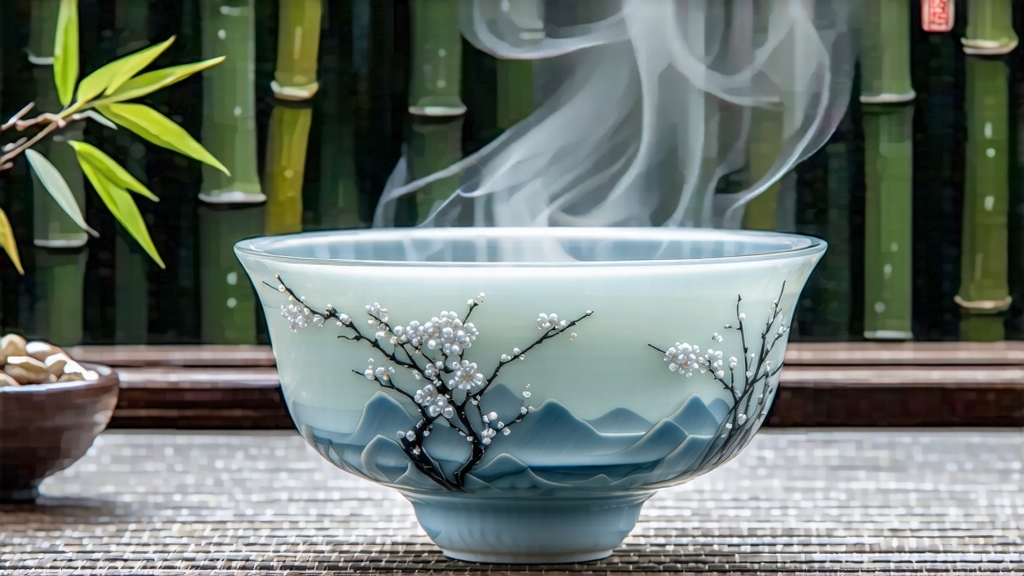
Among the six great families of Chinese tea, white tea is the least theatrical yet the most elusive, and within that quiet clan Bai Hao Yin Zhen—literally “White Hair Silver Needle”—sits like a hermit sage wrapped in gossamer robes. International drinkers often meet white tea first through mellow Bai Mu Dan or compressed Fu Cha cakes, but to understand the genre’s soul one must begin with the single-origin, single-bud expression that emperors once reserved for tribute and poets compared to “frozen moonlight dissolving on the tongue.”
History: from imperial secrecy to global curiosity
Song-dynasty chronicles already mention “white down tea” picked in the misty northeast of Fujian, yet Silver Needle as a defined style crystallised during the mid-Qing, when improved withering sheds allowed farmers in Fuding and Zhenghe to wither freshly plucked buds without any firing. Because the finished tea looked like silver needles strewn on black velvet, court officials christened it Yin Zhen and sealed it in lacquer jars for the Xianfeng Emperor. For two centuries its production remained so small that even in China only courtiers and southern pharmacists knew it; the West encountered it only after 1891 when Fuding ports opened to European traders seeking lightweight, non-fermented teas that survived tropical sea voyages better than green teas. Today Silver Needle leads white-tea exports, yet each kilo still demands roughly thirty-eight thousand hand-plucked buds, preserving its air of rarity.
Micro-terroir: why Fuding tastes like morning orchards
Fuding county clings to the northeastern horn of Fujian province, where the East China Sea’s warm currents meet the Taimu mountain range. The resulting maritime cloud blanket slows photosynthesis, forcing the Da Bai Hao cultivar to develop extra amino acids and the fuzzy epidermal hairs that give Silver Needle its trademark “white down.” Soils are lateritic granite mixed with ancient shell deposits, lending a faint marine salinity that echoes in the cup. While Zhenghe county farther inland also produces needle-style tea, its higher elevation and colder nights yield a darker liquor and sturdier bite; purists consider Fuding the benchmark, much like Champagne versus Crémant.
Plucking calendar: one dawn, one leaf, one moon
Authentic Silver Needle is made exclusively from unopened leaf buds, ideally 1.5–2.2 cm long and plucked at 55–65 % humidity when the bud’s cuticle is still taut. The window opens around Qingming (early April) and closes within ten days; buds plucked later develop a greenish cast and grassy edge. Experienced pickers use thumbnail rather than fingertip to avoid bruising, dropping buds into shallow bamboo baskets lined with banana leaf. A seasoned worker gathers barely 500 g of fresh material per hour, explaining the tea’s price parity with first-growth burgundy.
Craft: the art of doing almost nothing
White tea’s minimalism is deceptive; the craft lies in orchestrating time, air and temperature without the safety net of pan-firing or rolling. Once back at the shed, buds are spread on perforated bamboo trays 1–2 cm deep and left to wither for 36–60 hours depending on weather. Indoor withering relies on natural cross-ventilation; outdoor “sun withering” lasts only 20–40 minutes at dawn to avoid UV damage. Masters shuffle trays every hour so each bud loses moisture evenly, a rhythm akin to turning parchment in a print shop. When the bud’s moisture drops to 10–13 % and its spine feels glassy-brittle, a final desiccation at 40 °C locks in fragrance. No kneading, no twisting, no shaping—just the quiet alchemy of enzymatic oxidation hovering below 5 %. The result is a featherweight spear the colour of brushed pewter, still clad in down so fine it floats on cold water like pollen.
Grades and commercial names
Chinese domestic market subdivides Silver Needle into four unofficial tiers:
• Royal Needle (wang ji): buds longer than 2.2 cm, 95 % down coverage, harvested first two days.
• Grade One (te ji): standard length, ivory hue, marine-sweet aroma.
• Grade Two (yi ji): slightly olive tinge, acceptable for blending.
• Rain Needle (yu zhen): late-season, duller flavour, rarely exported.
Western vendors often label simply “Silver Needle” without grade; look for uniform colour, intact tips and a faint coconut-milk note when sniffed cold